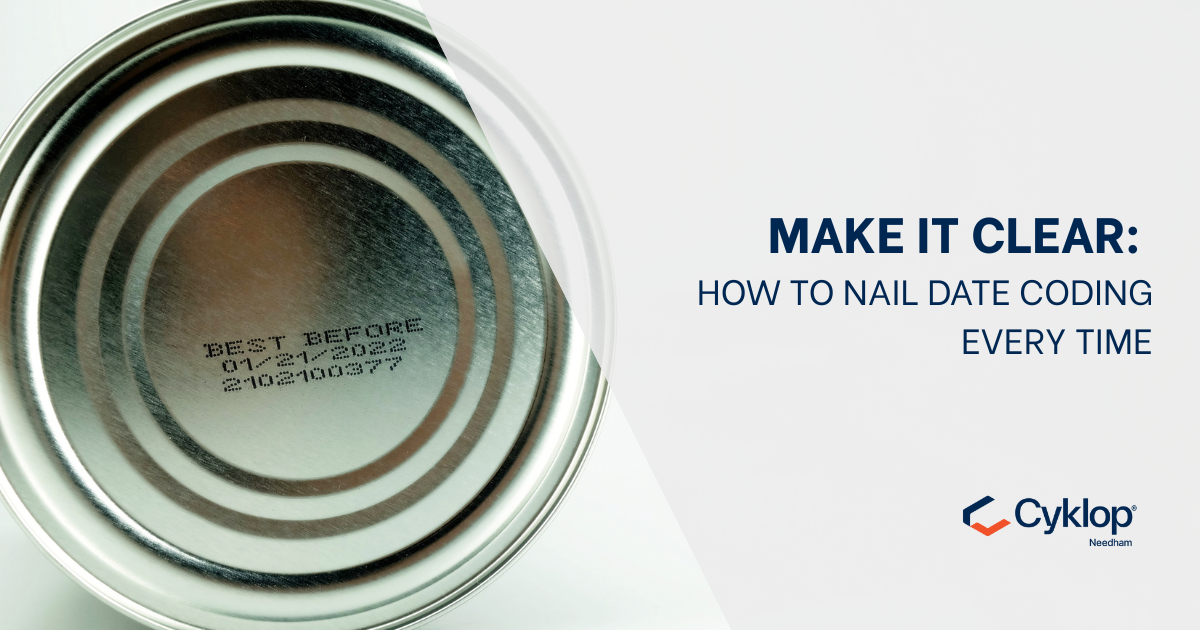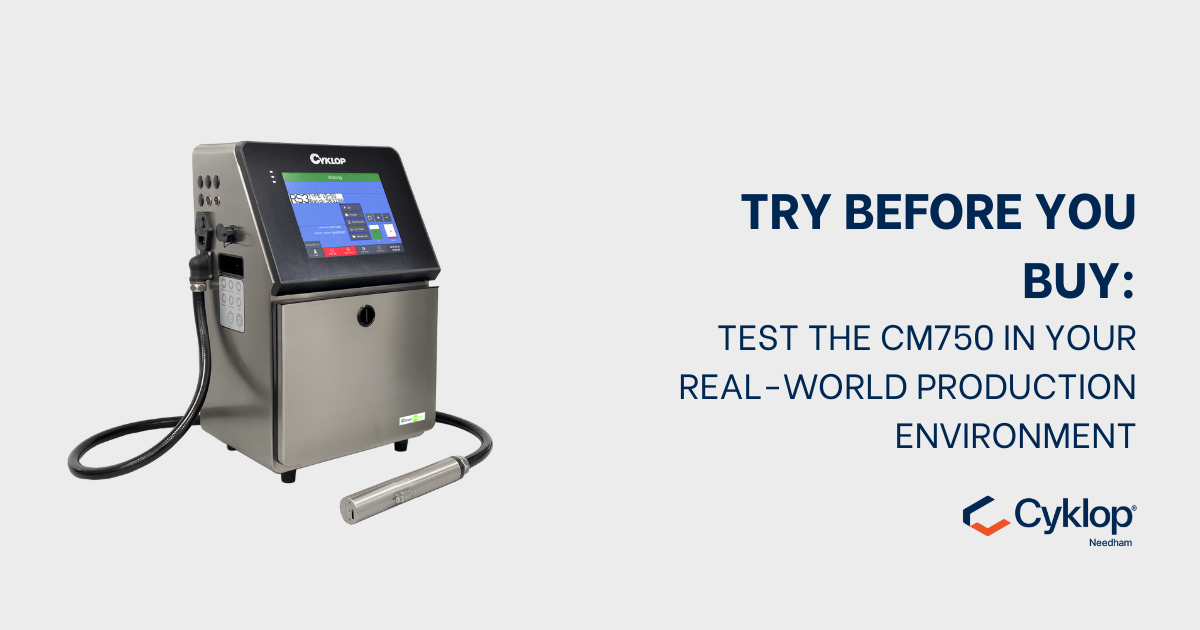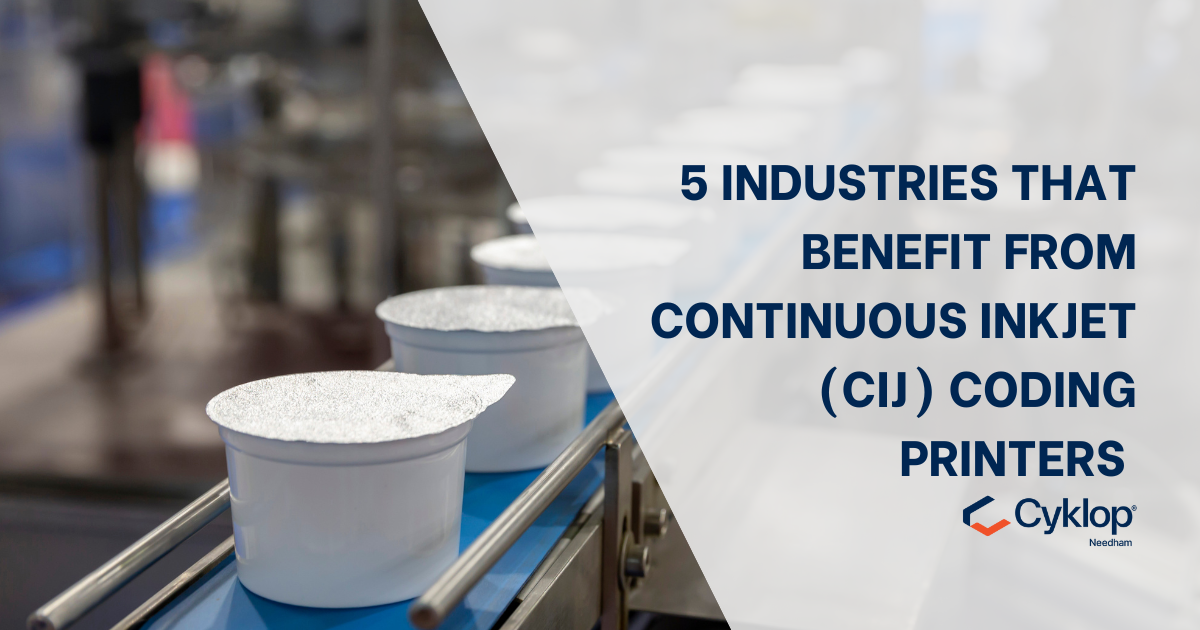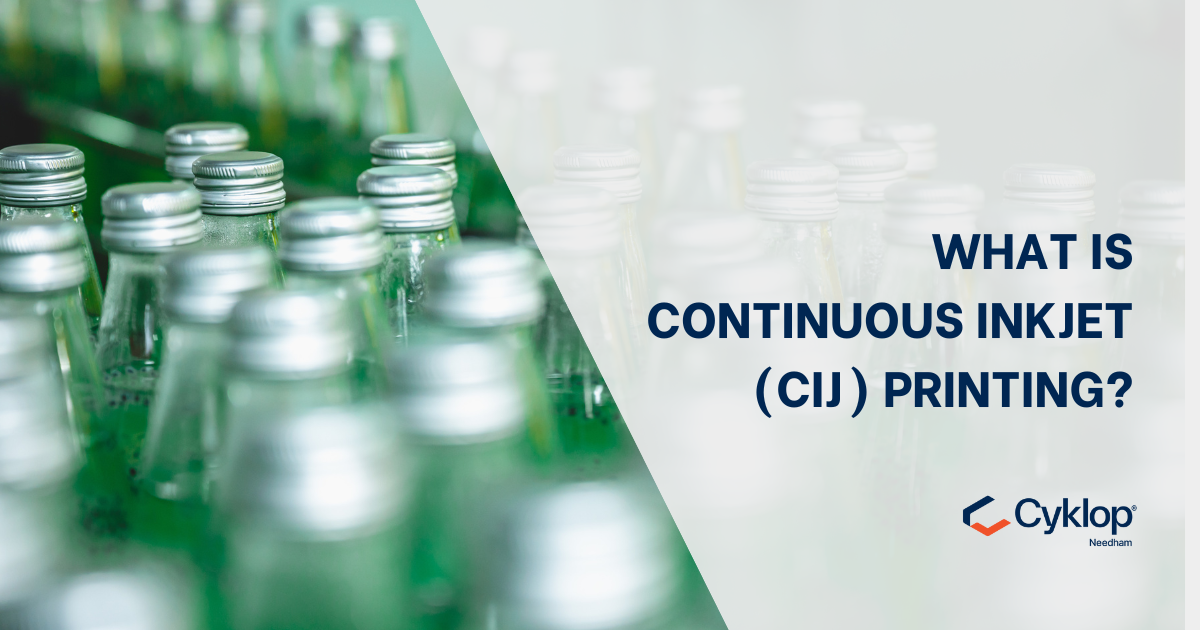Try Before You Buy: Test the CM750 in a Production Environment
Why a Free Trial Makes Sense for Your Business For businesses involved in packaging, labelling, or product coding, investing in the right printing...
2 min read
Samuel Mcgarrigle
Oct 28, 2021 4:13:15 PM

When it comes to printing use-by or best-before dates, there's one non-negotiable rule: the code must be legible, accurate, and durable. This information is not just a formality — it’s vital for consumer safety, retailer compliance, and brand credibility.
With that in mind, here are my top tips for getting the most out of your Continuous Inkjet (CIJ) printer and ensuring that critical date information is printed clearly and reliably every time.
When it comes to printing use-by or best-before dates, there's one non-negotiable rule: the code must be legible, accurate, and durable. This information is not just a formality — it’s vital for consumer safety, retailer compliance, and brand credibility.
With that in mind, here are my top tips for getting the most out of your Continuous Inkjet (CIJ) printer and ensuring that critical date information is printed clearly and reliably every time.
Before finalising any new packaging design or product launch, ensure the printed information has been considered from the start. That means checking:
There's enough space for the code to be printed legibly
The printer can keep up with production line speeds
The packaging surface is compatible with your ink and printer setup
This might seem obvious, but we’ve seen projects go live only to discover the code doesn’t fit — leading to a last-minute scramble or, worse, a full product recall.
Once you’ve confirmed there's room for the code, don’t waste it. Far too often we see batch codes or dates printed in tiny fonts, despite having a generous print area. The result? Frustrated consumers, annoyed retailers, and poor readability.
Use your CIJ printer’s character width setting (sometimes called line speed on older machines) to adjust the print size appropriately.
Positioning matters. CIJ print heads should typically be 5 to 8 mm away from the substrate. If they’re too far, your print will spread and lose clarity. If they’re too close, you risk smudging or damage to the packaging — especially on curved or irregular surfaces.
Avoid simply extending message height settings if you want a larger print. This often causes poor character definition. Instead, increase distance between the print head and the substrate, or use multiple lines of print if your CIJ model supports it.
If your printer can handle more than one line of text, use it. Squashing expiry dates, batch numbers, and promotional codes onto a single line reduces legibility. Split the message across two lines for a cleaner, more readable layout.
Poor print quality is often down to incorrect setup, not faulty equipment. Check:
Ink stream alignment
Modulation settings
Ink viscosity and expiration dates
A perfectly functional printer can start to fade after 10 minutes if these variables aren’t calibrated correctly. Regular maintenance and monitoring go a long way.
Dark or coloured containers can make black ink almost invisible. In these cases, consider using light-coloured or pigmented inks that contrast with your packaging. Legibility must be maintained across all conditions — ambient light, refrigeration, and handling.
These tips might seem simple, but they can make a significant difference to both compliance and customer satisfaction. At the end of the day, a code that can’t be read — or isn’t there — can cost you far more than a few minutes of printer setup.
If you’re ever unsure, consult your CIJ supplier before going to print. At Cyklop Needham, we’re here to help you find the most effective, reliable solution for your application.
Questions about CIJ setup or ink selection?
Get in touch with our expert team:
📞 UK: +44 (0)1948 662629
📧 enquiries@needham-ink.com


Why a Free Trial Makes Sense for Your Business For businesses involved in packaging, labelling, or product coding, investing in the right printing...

There are several key factors driving manufacturers to invest in coding and marking technology—from regulatory compliance and product traceability to...

What Is CIJ Printing? While inkjet printers are a common sight in homes and offices, a different class of technology powers the industrial world—...